How upcoming missions to Mars will help predict its wild dust storms
Future trips by rovers and astronauts will need better forecasts to survive dangerous weather

A dust storm rolls across Mars in this April 2018 image from the European Space Agency’s Mars Express spacecraft. That dusty season also launched a storm that engulfed the entire planet and snuffed out the solar-powered Opportunity Mars rover.
ESA, DLR, FU Berlin (CC BY-SA 3.0 IGO)
- More than 2 years ago
It started with a spring breeze. The Opportunity rover watched with its robotic eyes as the wind blowing through Perseverance Valley kicked puffs of rusty Mars dust into the air. In more than 14 Earth years of exploring the Red Planet, the rover had seen plenty of this kind of weather.
But the dust grew thicker. Small flecks swirled like wildfire smoke through the atmosphere, turning sun-filled midday into dusk, then night. Within a week, the dust storm spanned more than twice the area of the contiguous United States and eventually encircled the whole planet, allowing just 5 percent of the normal amount of light to reach Opportunity’s solar panels. The rover went quiet.
“It got so bad so quickly, we didn’t even have time to react,” says Keri Bean of NASA’s Jet Propulsion Laboratory in Pasadena, Calif. Bean had joined Opportunity’s rover-driving team just before that May 2018 storm.
Dust storms like that one, which snuffed out Opportunity for good, are the most dramatic and least predictable events on the Red Planet (SN: 3/16/19, p. 7). Such storms can make the nail-biting process of landing on Mars even more dangerous and could certainly make life difficult for future human explorers.
Despite almost 50 years of study, scientists are missing some key data that would help explain how dust gets kicked into the air to form planet-wide storms and what keeps it circulating for weeks or months at a time.
“We just do not understand how dust storms form on Mars,” says planetary meteorologist Scott Guzewich of NASA’s Goddard Space Flight Center in Greenbelt, Md. History has shown that certain regions and seasons are more prone to dust than others. “Other than that, we’re … blind.”
Mars missions set to launch this summer, from the United States, China and the United Arab Emirates, will help solve that pressing mystery. NASA’s new rover, Perseverance, will carry a suite of weather sensors called MEDA, for Mars Environmental Dynamics Analyzer. Those sensors will build on decades of Mars exploration and fill in missing puzzle pieces.
“Predicting dust is the ultimate goal” for MEDA, says planetary scientist Germán Martínez of the Lunar and Planetary Institute in Houston. The data MEDA will collect will be “the most substantial contribution to this topic so far.”
Dust, dust everywhere
Dust is as important to weather on Mars as water is on Earth. With no oceans, scant water vapor and a thin atmosphere, Martian weather can be monotonously calm for about half the Martian year, which lasts close to 687 Earth days. But when the Red Planet’s orbit brings it closer to the sun, dust storm season begins.
In the 10-month dusty season, which corresponds to spring and summer in the southern hemisphere, extra sunlight warms the atmosphere. That warmth generates strong winds as air moves from warm to cool regions. Those winds lift more dust, which absorbs sunlight and warms the atmosphere, generating still stronger winds, which lift even more dust.
There is a season
Mars’ dusty season lasts from the start of southern spring to the end of southern summer (thicker blue line), when the Red Planet orbits closest to the sun. The extra sunlight warms the atmosphere, setting off a feedback loop that can lift dust into the sky and send it circulating around the globe.
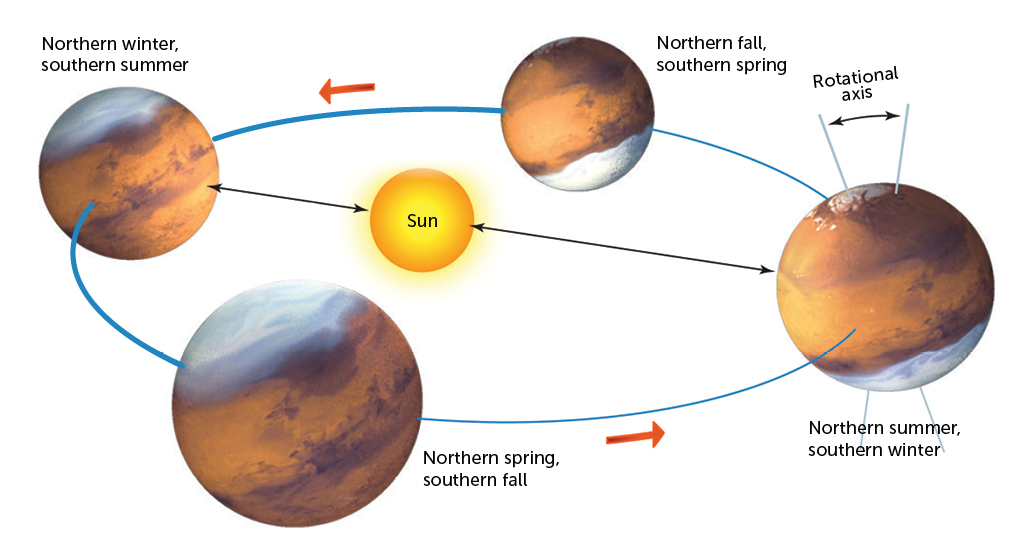
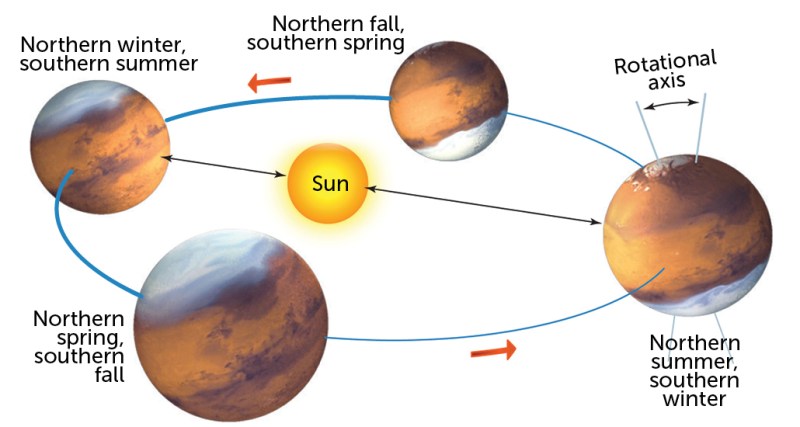
The storms come in a range of sizes: Local storms can cover an area about the size of Alaska and last up to three Martian days (each of which lasts about 24.5 hours); global storms can engulf the planet for months. The storm that defeated Opportunity raged from the end of May through late July. Such global storms probably result when several smaller storms merge.
Global dust storms have affected Mars exploration since the arrival of the first long-term robotic visitor in 1971, when NASA’s Mariner 9 orbiter found the planet’s surface entirely obscured. Opportunity and its twin rover, Spirit, both survived a global dust storm in 2007, yet a large regional dust storm ended the Phoenix lander’s mission in 2008.
There has never been a Mars mission that didn’t worry about dust.
A farmer’s almanac
Luckily, Mariner 9 was an orbiter, with no plans to land. It just had to wait for the skies to clear to start snapping pictures of the Martian surface. But the same 1971 storm is probably to blame for vanquishing two Soviet landers that arrived at almost the same time.
Spacecraft that must land to do their work can’t just wait for better timing. Launch windows for missions between Earth and Mars open only every 26 months or so. Engineers who design landing systems need to know what conditions a spacecraft will face when it gets there, says Allen Chen of the Jet Propulsion Lab, who leads the entry, descent and landing for Perseverance.
The most important factor is the density of the atmosphere. Even though Mars’ atmosphere exerts just 1 percent of the pressure of Earth’s on the planet’s surface, both the thin Martian air and the wind blowing through it slow down the spacecraft and affect where it lands, Chen says.
Perseverance will take pictures of the ground while parachuting through the atmosphere and match the images to an onboard map made with images from NASA’s Mars Reconnaissance Orbiter. Based on those details, an in-flight navigation system will steer the rover to a safe landing spot, helping the rover touch down within an area 25 kilometers wide — the most precise Mars landing ever.
“But that’s dependent on being able to see the ground,” Chen says, without dust obscuring the view.
To land a rover, engineers like Chen rely on forecasts that use the past to tell the future — similar to weather forecasts on Earth, but with less data. Atmospheric scientist Bruce Cantor of Malin Space Science Systems in San Diego, a self-described Mars weatherman, put out a Mars weather report every week until September 2019. His forecasts are based on statistics and historical data, mostly taken from orbit. “It’s almost like a farmer’s almanac in my head,” he says.
Cantor’s forecasts for Mars landings since 1999 have been “pretty accurate,” he says, and he boasts that he predicted the storm that ended the Phoenix mission to within three days. More accuracy wouldn’t have saved Phoenix, he says. The lander’s batteries were already low from low winter sunlight levels and the buildup of dust on the solar panels. “It was just a matter of what storm was going to be the mission-ending one,” he says.
He foresees clear skies for Perseverance’s touchdown in February 2021. Based on the season and weather patterns in the past, the probability of a dust storm hitting within 1,000 kilometers of the center of Perseverance’s landing area is less than 2 percent, Cantor and colleagues reported in the journal Icarus in March 2019.
But just in case, Chen’s team trained the navigation system to “deal with it being pretty darn dusty,” Chen says.
A constellation of weather stations
As Mars missions get more complex, and especially as NASA and other groups contemplate sending human explorers, being able to prepare for dust storms takes on extra urgency.
“Someday, somebody is going to go to Mars, and they’re going to want to know when and where storms occur,” Cantor says. “That’s when this stuff becomes really important.”
Cantor would know. Well over a decade ago, while testing a different rover system in Southern California, he jumped into a 2-meter-tall dust devil just to see what it would feel like. “Not one of my smartest moves,” he says. He wasn’t injured, but “it did not feel good. It felt like getting sandblasted.”
Martian astronauts would be protected by more than shorts and a T-shirt, but dust could easily invade human habitats and clog air filters — or damage astronauts’ lungs if they breathe it in. The dust may even carry poisonous and carcinogenic materials that could make astronauts ill over the course of a mission.
Astronauts will need to know when to stay inside. Part of the problem in predicting storms is a sheer lack of data. For Earth’s weather, meteorologists use thousands of ground-based weather stations, plus data from satellites, balloons and airplanes. Mars has only six active satellites, run by NASA and the European and Indian space agencies. And just two sets of weather instruments report from Mars’ surface: one on the Curiosity rover, which has been collecting data since 2012 (SN: 5/2/15, p. 24), and a nearly identical set that arrived with the InSight lander in 2018.
Collecting dust
More than seven Earth years in the Red Planet’s dusty atmosphere has taken its toll on the Curiosity rover, shown in “selfies” the rover took in October 2012 (the 84th Martian day of its mission, left) and in February 2020 (Martian day 2,687, right).
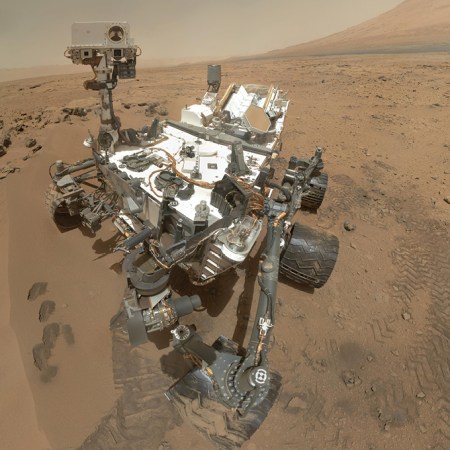
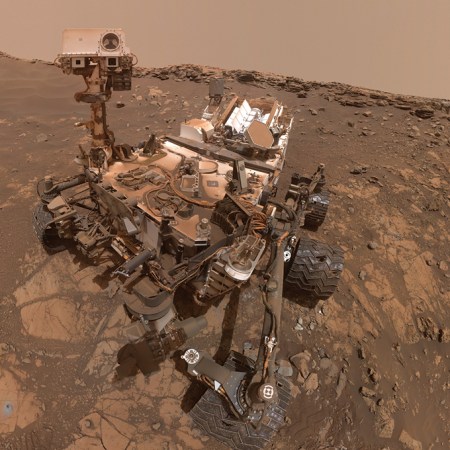
But those two spacecraft are practically neighbors, a big weakness for understanding the whole planet. “It’d be like having one of your weather stations in D.C. and the other in Buffalo,” Guzewich says.
Perseverance will help fill in the gaps. So might China’s first Mars rover, Tianwen-1, set to launch in July with an instrument to measure air temperature, pressure and wind. The Russian and European ExoMars mission, scheduled to launch in 2022, includes a lander called Kazachok equipped with meteorology and dust sensors (SN Online: 3/12/20).
From the air, the UAE’s Emirates Mars Mission, known as Hope, will observe weather, including storms, and how the atmosphere interacts with the ground. Over one Martian year in orbit, Hope will help build a global picture of how the atmosphere changes day to day and between the seasons.
Just having a few more weather stations will be a big boost, says José A. Rodríguez Manfredi of the Center for Astrobiology in Madrid, principal investigator for MEDA, the weather sensors on Perseverance. “We will have a mini network working on Mars in a few years.”
But four or five weather stations on the ground probably won’t be enough. To reliably predict dust storms, what Mars scientists need is a global network collecting data all the time.
To cut down on the cost of such a network, Guzewich suggests figuring out which measurements “would give us the most bang for our buck.” For Earth, NASA and other agencies use a type of study called an Observing System Simulation Experiment to figure out which variables are most important for predicting the weather. Satellites are then designed to focus on those most valuable observations. Such a study has never been done for Mars, but the only obstacle is funding, Guzewich says.
“Mars atmospheric scientists have been clamoring” for such experiments, he says. “We’re not going to reproduce Earth’s observing network before humans go to Mars. It’s not going to happen…. But maybe we could do something that is financially and technologically reasonable that really does make a difference and gets us to the point where we can predict the future a couple days in advance.”
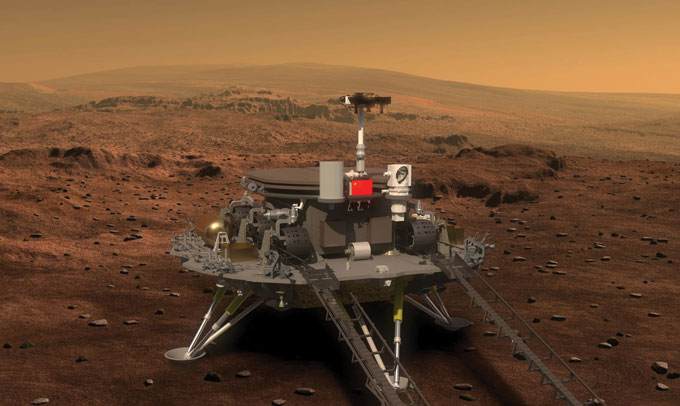
Blowing in the wind
Mars forecasts also suffer from a lack of fundamental information, Martínez says. How hard does the wind have to blow to lift the dust? And what does the dust do once it’s airborne?
This is where Perseverance will shine. The rover will make the best direct measurements yet of wind speed and direction on Mars, especially the vertical wind that lifts dust upward.
For a long time, scientists struggled to understand how dust was lifted into the air at all. “It seemed like it couldn’t be possible,” Guzewich says. “The atmosphere is so thin, a single particle of dust or sand is so heavy, it just shouldn’t work.” Observations and experiments over the last 20 years suggest that once sand grains start bouncing along the surface, they can knock into other grains and knock smaller particles upward. But it’s still not possible to tell which of those bouncing grains will lead to a storm — or which of those storms will go global.
Mars climatologists have tried to make detailed wind measurements for decades, Martínez says, but have hit several stretches of bad luck. Only five surface missions — the Viking 1 and 2 landers in 1976, the Pathfinder lander in 1997 and the ongoing Curiosity and InSight missions — have provided useful data on wind speed and direction near the surface. And even those have had mixed results.
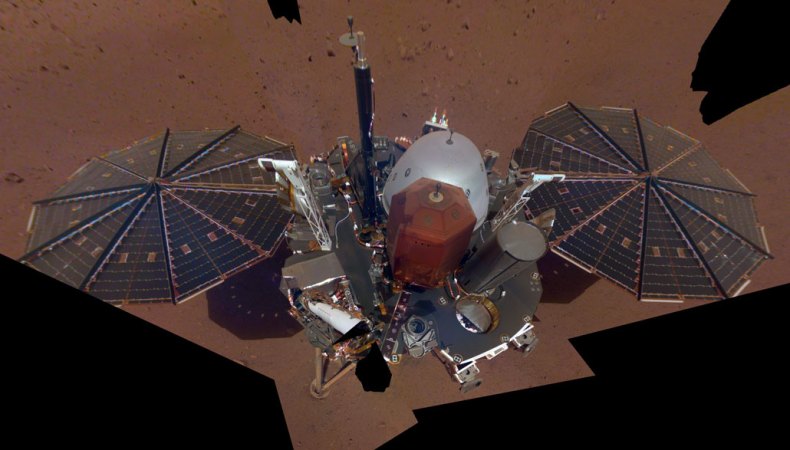
“Arguably, the best wind record on Mars is still the one from the Vikings, 40 years ago,” Martínez says. Curiosity was supposed to take direct wind measurements in all directions with a pair of electrically heated booms that jutted away from the rover’s neck. “We had great expectations,” Martínez says.
But photos the rover took of itself showed that one boom was damaged as the rover landed, and out of commission. For the first 1,490 Martian days of Curiosity’s mission, the rover could take measurements only when the wind was blowing head on. Then, in October 2016, the second boom broke. In April, researchers suggested a way to hack Curiosity’s temperature sensors to get wind data, but there’s no plan to use that hack at the moment, Guzewich says.
That leaves InSight, but its wind readings are muddled by other parts of the lander getting in the way of airflow. The readings are still useful, but the MEDA team hopes to do better.
Taking lessons from InSight and Curiosity, Perseverance’s MEDA will have more wind sensors that reach farther from the rover’s body. The sensors will be protected by a shield until after the rover has landed safely.
“We are very excited,” Martínez says. “The vertical wind has never been measured before on Mars. We’re going to do that.”
Measuring wind speeds will help scientists determine how hard the wind must blow to kick up dust, the first step in triggering a dust storm.
That figure has personal resonance for Bean, the former Opportunity rover operator. Her first shift was exactly two weeks before the mission-ending global dust storm. She told the rover to use its arm to brush the surface of a rock.
“My coworkers blamed me for starting a whole butterfly effect,” she says. “You brushed the surface,” they joked, “the dust went up, you started the whole dust storm.”
In its end-of-mission report, the Opportunity team admits it will never really know what ended Opportunity’s nearly 15-year run. One possibility is that the dust grew too thick on the solar panels for gentle wind in the calm season to blow the dust off.
One potential fix would be to design future rovers to vibrate their solar panels fast enough to make dust skitter off, Bean says. Once humans are on the planet, they could just clear dust with their arms.
A week or so before Opportunity was officially declared lost, Bean decided to memorialize the rover. “I’d always liked tattoos, but nothing ever spoke to me,” she says. In college, she had studied Mars’ atmospheric opacity — the amount of light that can penetrate an atmosphere’s dust, represented by the Greek letter τ. So Bean got a tattoo on her arm of the last measurement Opportunity sent to Earth: “τ=10.8.” That stands for a night-dark sky in the middle of the day.

Trustworthy journalism comes at a price.
Scientists and journalists share a core belief in questioning, observing and verifying to reach the truth. Science News reports on crucial research and discovery across science disciplines. We need your financial support to make it happen – every contribution makes a difference.







